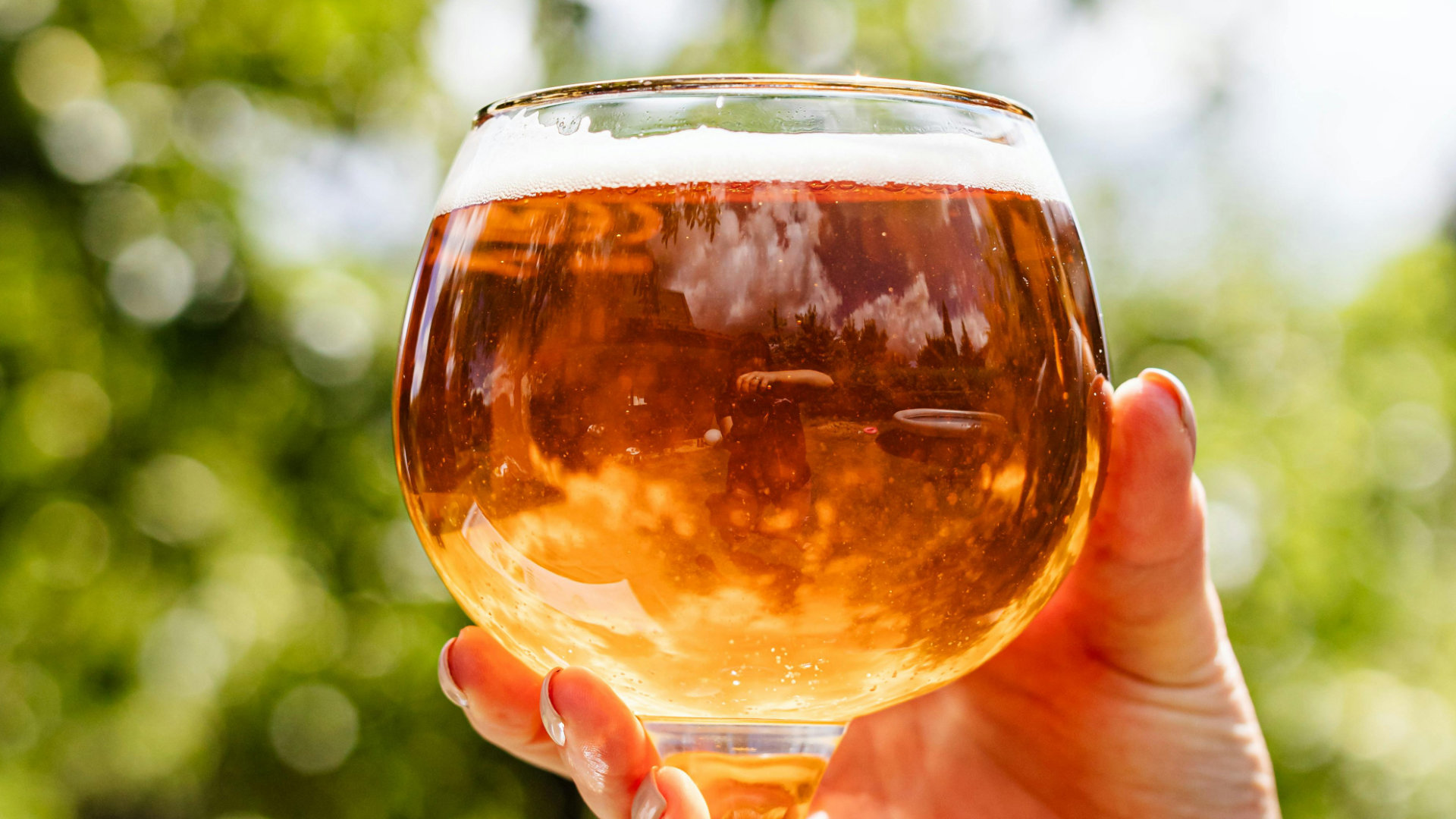I first sampled a Geipel Pilsner at our local craft beer bar, Bottle & Barrel, here in Aberystwyth. It was a cracking pint and when I discovered that the Geipel brewery is just up the road (well, about 50 miles north of here) I was really intrigued about the story behind this brew. Geipel Brewing are based in rural North Wales and have been producing traditional lagers since 2013. On a mission to reinvent British lager, Geipel stand firm in their loyalty to original brewing methods that challenge modern bland, mass-produced lagers. And they are right to - you can taste it in their brews.Â
Housed in a hillside barn, Geipel’s 7 barrel (1,000 litre) brewery crafts fresh lagers from their own water in copper clad equipment. Some of the traditional brewing methods they use include decoction mashing, which preserves the delicate flavours in lager, natural carbonation and saying no to filtration and pasteurisation.Â
Geipel’s award-winning beers include their Pilsner (4.6%) made with Perle hops, a 6.5% Bock with Hersbrucker hops and their California Common style beer, Golden Gate (5%). Also noteworthy is Aloha from Bala, their dry hopped Pilsner (4.4%), with lactic acid flavours of sour papaya. This Pilsner began its life as an experiment but now forms part of their core range. Read more on that below.Â
Erik Geupel, founder and brewer at Geipel Brewing, took time out of his busy brew day to talk more about traditional lagers and how we as homebrewers can make the perfect Pilsner.
YB: How did you get into brewing?
EG: I’ve always enjoyed beer so took a homebrewing class at university. That continued as a hobby for many years until I found myself at a career juncture after the economy crashed in 2008. Every homebrewer dreams of turning pro and the idea kept coming back to me as I charted out what to do next with my life.
YB: What gave you the drive to set up Geipel?
EG: With the free time I had between jobs after 2008, I travelled to Franconia tracing my family roots. I fell in love with the local fresh lagers that were so very different to the ubiquitous mass-produced lagers available in the UK. At the time, there were only a handful of craft brewers doing lagers here, but I was convinced there must be a market for the real thing. After all, it is the most popular style in the world.
YB: Tell us about the traditional brewing methods you use.
EG: Firstly, we follow the Rheinheitsgebot, the German purity law that dictates only four ingredients may go into beer: water, malt, hops and yeast. No acidifiers, finings, flavourings or clarifiers are added. Water comes straight from our own borehole and is filtered for sediment but otherwise untreated. The beer itself is never filtered. We use low-alpha German noble hops even for bittering. We do a decoction where part of the mash is boiled and of course, we lager: the long, cold, slow (3 – 4 weeks) secondary fermentation that gives the style its name.
YB: Aloha from Bala is a great brew. How does the brewing process differ from your traditional Pilsner?
EG: Thanks! Shout-out to Tom at Heavy Industry Brewing (sadly, now defunct) who was co-creator of the recipe. There are 2 significant differences from our Pilsner: first we create sourness by holding a portion of the mash at a temperature that encourages lactobacillus activity. This is then added to our normal mash. Second, we use a modern Australian hop in the whirlpool and for dry hopping. This hop (Topaz) works particularly well with the sourness giving a tropical fruit aroma that inspired the name.
YB: What are your top tips for creating a great pilsner?
EG: I find that you need to use German/Czech ingredients (malt & hops) to get the most authentic flavour. This is more important than say, decocting for which the impact can be subtle. You need lots of healthy lager yeast: much more than for an ale. But the hardest part for homebrewers is probably temperature control. You need to be able to maintain precise (cold) temperatures and slowly cool down over the course of weeks to eliminate diacetyl and get the most from your yeast.Â
YB: What else can we look forward to from Geipel this year?
EG: The big project for this year is to get our logistics sorted. We’re in a very rural location and it’s hard to get ingredients in and beer out. I hope that by the end of the summer we’ll have better access and more space which will allow us to distribute more and further.
A question from our community:
@horizon.brewing on Instagram asks: In terms of trying to increase throughput in the brewery whilst retaining quality, what are your tips for a strong healthy fermentation with acceptable clarity for a Pilsner?Â
EG: Lots of yeast will help both: increase pitching rates until you get the cost vs. throughput balance right. If your equipment is capable, a very cold (-1ºC) stint at the end of lager phase will improve clarity and stability. Traditional horizontal lagering tanks speed things up by reducing the distance the yeast has to drop out. (I wish we had some.) In any case, best to convince customers that substance (flavour) should always trump style (appearance).
Find Geipel brews at various venues in North Wales.Â
Read more at www.geipel.co.uk
Follow Geipel Brewing:
 @geipelbrewing











